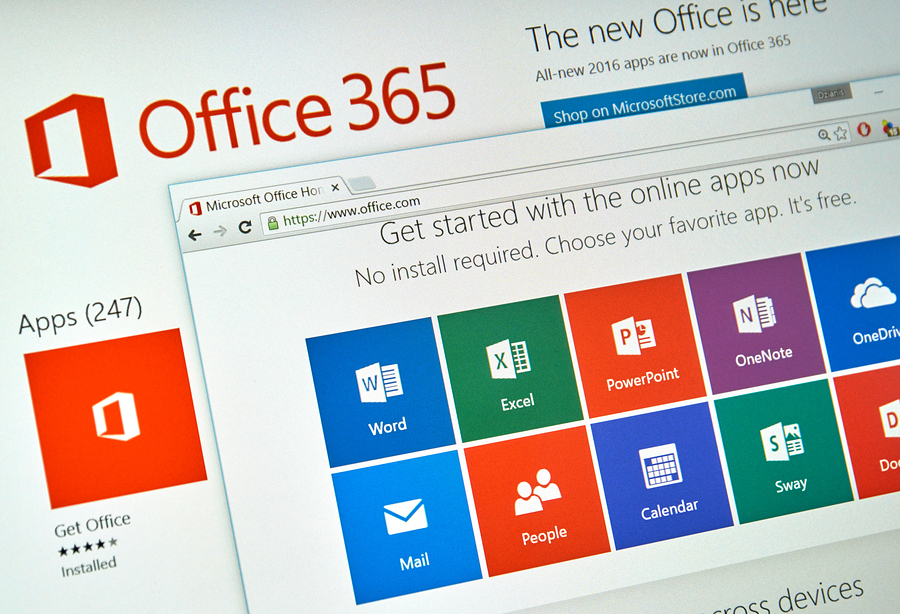Greetings!
Last month, we talked about personalizing your Windows 10 machine. In the August newsletter, we’ll cover Office 365 features. Find more on Blog at GrundigIT.com
As Always, Happy Computing!
— Tom Grundig

Office 365 has many benefits for ease of use and to increase workplace efficiency. Perhaps the greatest benefit to Office 365 is how effortless it makes accessing email. Outlook with Office 365 does away with the pains of needing to put in server specific settings to access any user’s email. Instead, all that is needed is a username and password.
After the creation of the user account, all the new user needs to do is log in. Any user using Office 365 can access their email through Outlook, or through their internet browser by going to mail.office365.com and logging in with the same username and password they use while at work, enabling them to access their email on any computer. The browser version of Outlook is made to look and function exactly the same as the desktop version. Office 365 also offers mobile apps, including Outlook and Word. Emails can be sent and received, and documents viewed and edited at any location.
Shared Mailboxes
Another very useful feature of Office 365 is sharing. There are a few different sharing features in Office 365. In the case of email, specific user mailboxes can be shared, and shared mailboxes can be created that don’t have a specific user attached, an example of which would be “support@example.com“. Such an account is easy for customers to understand. And multiple people who work in customer support at your company will receive the email and can respond. Using a shared mailbox in this way can reduce customer wait times, and removes the need for forwarding and CCing to other people in the department.
Shared Calendars
Similarly, you can create shared calendars. There are multiple ways to set up these calendars with varying permissions for each user who shares the calendar. For example, everyone could have access to the calendar in the office, but only select people could add, edit, or remove tasks or events from the calendar. This is useful for people acting as receptionist or scheduler. The permissions on the calendars are very flexible and you can be edit them any time. There is no limit to how many shared calendars a user has access to, and a shared calendar can be shared with everyone.
Shared Contacts
Contacts in Office 365 can also be shared with anyone in the office. This eliminates the need for people to ask for specific contacts, or writing down contact information. A user can share contacts by giving access to a shared contact folder, or storing the contacts of a shared mailbox. When sharing contacts, the owner of the contact folder or mailbox will have options. These include to allow the users to add, edit, or remove contacts from the folder, or only view them.
There are multiple packages of Office 365 that Microsoft offers for businesses. Each package supports up to 300 users and has a monthly prace set on the amount of user accounts. The cheapest package is $5.00/month per user, but doesn’t offer any offline applications. The most robust plan is $12.50/month per user and offers a custom domain name and all offline applications, including Word, Excel, and PowerPoint. This plan also allows each user to install each Office 365 application on 5 phones, 5 tablets, and 5 computers. Each plan also comes with 1 TB of OneDrive storage. OneDrive is Office 365’s cloud storage solution, and integrates very well with all Office 365 applications, as well as Windows 10.
For more details on everything we talked about today click here
